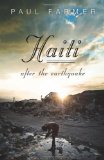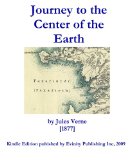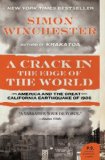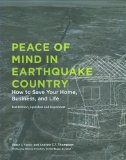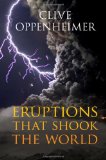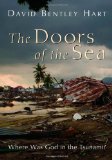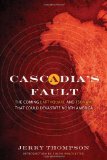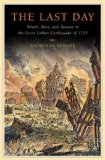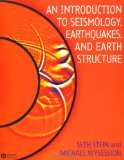Haiti After the Earthquake
by Paul Farmer
Hardcover from PublicAffairs
ISBN: 1586489739
On January 12, 2010 a massive earthquake laid waste to Port-au-Prince, Haiti, killing hundreds of thousands of people. Within three days, Dr. Paul Farmer arrived in the Haitian capital, along with a team of volunteers, to lend his services to the injured.In this vivid narrative, Farmer describes the incredible suffering--and resilience--that he encountered in Haiti. Having worked in the country for nearly thirty years, he skillfully explores the social issues that made Haiti so vulnerable to the earthquake--the very issues that make it an "unnatural disaster." Complementing his account are stories from other doctors, volunteers, and earthquake survivors.
Haiti After the Earthquake will both inform and inspire readers to stand with the Haitian people against the profound economic and social injustices that formed the fault line for this disaster.
Journey to the Center of the Earth
by Jules Verne
Kindle Edition from Evinity Publishing Inc
Media Published: 2009-
This is Jules Verne's entry in the subterranean adventure genre, a classic of 19th century science fiction. Originally published in 1864 as Voyage au centre de la Terre, there are two principal English translations. The most commonly reprinted translation, published by Griffith and Farran in 1871, changed the names of some of the characters, and added and deleted passages ad lib. This translation, however, is considered more accurate.
Verne looms large in the literature of the hollow earth, not only because of his fame, but because the book is so well written, and, despite some creaky science, is not a complete departure from reality, compared with other similar books from the 19th century such as Etidorpha, or the later Pellucidar books of Egdar Rice Burroughs.--J.B. HareThis is Jules Verne's entry in the subterranean adventure genre, a classic of 19th century science fiction. Originally published in 1864 as Voyage au centre de la Terre, there are two principal English translations. The most commonly reprinted translation, published by Griffith and Farran in 1871, changed the names of some of the characters, and added and deleted passages ad lib. This translation, however, is considered more accurate.
Verne looms large in the literature of the hollow earth, not only because of his fame, but because the book is so well written, and, despite some creaky science, is not a complete departure from reality, compared with other similar books from the 19th century such as Etidorpha, or the later Pellucidar books of Egdar Rice Burroughs.--J.B. Hare
Krakatoa: The Day the World Exploded: August 27, 1883
by Simon Winchester
Paperback from Harper Perennial
Media Published: 2005-
ISBN: 0060838590
Simon Winchester, New York Times bestselling author of The Professor and the Madman, examines the legendary annihilation in 1883 of the volcano-island of Krakatoa, which was followed by an immense tsunami that killed nearly forty thousand people. The effects of the immense waves were felt as far away as France. Barometers in Bogotá and Washington, D.C., went haywire. Bodies were washed up in Zanzibar. The sound of the island's destruction was heard in Australia and India and on islands thousands of miles away. Most significant of all -- in view of today's new political climate -- the eruption helped to trigger in Java a wave of murderous anti-Western militancy among fundamentalist Muslims, one of the first outbreaks of Islamic-inspired killings anywhere. Krakatoa gives us an entirely new perspective on this fascinating and iconic event.
This P.S. edition features an extra 16 pages of insights into the book, including author interviews, recommended reading, and more.It may seem a stretch to connect a volcanic eruption with civil and religious unrest in Indonesia today, but Simon Winchester makes a compelling case. Krakatoa tells the frightening tale of the biggest volcanic eruption in history using a blend of gentle geology and narrative history. Krakatoa erupted at a time when technologies like the telegraph were becoming commonplace and Asian trade routes were being expanded by northern European companies. This bustling colonial backdrop provides an effective canvas for the suspense leading up to August 27th, 1883, when the nearby island of Krakatoa would violently vaporize. Winchester describes the eruption through the eyes of its survivors, and readers will be as horrified and mesmerized as eyewitnesses were as the death toll reached nearly 40,000 (almost all of whom died from tsunamis generated by the unimaginably strong shock waves of the eruption). Ships were thrown miles inshore, endless rains of hot ash engulfed those towns not drowned by 100 foot waves, and vast rafts of pumice clogged the hot sea. The explosion was heard thousands of miles away, and the eruption's shock wave traveled around the world seven times. But the book's biggest surprise is not the riveting catalog of the volcano's effects; rather, it is Winchester's contention that the Dutch abandonment of their Indonesian colonies after the disaster left local survivors to seek comfort in radical Islam, setting the stage for a volatile future for the region. --Therese Littleton
A Crack in the Edge of the World: America and the Great California Earthquake of 1906 (P.S.)
by Simon Winchester
Paperback from Harper Perennial
Media Published: 2006-
ISBN: 0060572000
Unleashed by ancient geologic forces, a magnitude 8.25 earthquake rocked San Francisco in the early hours of April 18, 1906. Less than a minute later, the city lay in ruins. Bestselling author Simon Winchester brings his inimitable storytelling abilities to this extraordinary event, exploring the legendary earthquake and fires that spread horror across San Francisco and northern California in 1906 as well as its startling impact on American history and, just as important, what science has recently revealed about the fascinating subterranean processes that produced it--and almost certainly will cause it to strike again.
Geologically speaking, 1906 was a violent year: powerful, destructive earthquakes shook the ground from Taiwan to South America, while in Italy, Mount Vesuvius erupted. And in San Francisco, a large earthquake occurred just after five in the morning on April 18--and that was just the beginning. The quake caused a conflagration that raged for the next three days, destroying much of the American West's greatest city. The fire, along with water damage and other indirect acts, proved more destructive than the earthquake itself, but insurance companies tried hard to dispute this fact since few people carried earthquake insurance. It was also the world's first major natural disaster to have been extensively photographed and covered by the media, and as a result, it left "an indelible imprint on the mind of the entire nation."
Though the epicenter of this marvelously constructed book is San Francisco, Winchester covers much more than just the disaster. He discusses how this particular quake led to greater scientific study of quakes in an attempt to understand the movements of the earth. Trained at Oxford University as a geologist, Winchester is well qualified to discuss the subject, and he clearly explains plate tectonics theory (first introduced in 1968) and the creation of the San Andreas Fault, along with the geologic exploration of the American West in the late 19th century and the evolution of technology used to measure and predict earthquakes. He also covers the social and political shifts caused by the disaster, such as the way that Pentecostalists viewed the quake as "a message of divine approval" and used it to recruit new members into the church, and the rise in the local Chinese population. With many records destroyed in the fire, there was no way to distinguish between legal and illegal immigrants, and thus many more Chinese were granted citizenship than would have otherwise been. Filled with eyewitness accounts, vivid descriptions, crisp prose, and many delightful meanderings, A Crack in the Edge of the World is a thoroughly absorbing tale. --Shawn Carkonen
Peace of Mind in Earthquake Country: How to Save Your Home, Business, and Life
by Peter Yanev, Andrew C.T. Thompson
Paperback from Chronicle Books
ISBN: 081186183X
In this updated and expanded third edition, seismic engineer Peter Yanev and risk management consultant Andrew Thompson explain how to prepare one's property to withstand a powerful quake, and how to protect one's family during and after the chaos. Residents of earthquake country learn why and how earthquakes occur, which construction methods are best suited for fault zones, and how to shore up existing buildings to survive the next big one. This comprehensive resource deconstructs complicated insurance policies, maps existing and suspected faults, and demystifies terms like "liquifaction" and "cripple walls."
Eruptions that Shook the World
by Clive Oppenheimer
Hardcover from Cambridge University Press
ISBN: 0521641128
What does it take for a volcanic eruption to really shake the world? Did volcanic eruptions extinguish the dinosaurs, or help humans to evolve, only to decimate their populations with a super-eruption 73,000 years ago? Did they contribute to the ebb and flow of ancient empires, the French Revolution and the rise of fascism in Europe in the 19th century? These are some of the claims made for volcanic cataclysm. Volcanologist Clive Oppenheimer explores rich geological, historical, archaeological and palaeoenvironmental records (such as ice cores and tree rings) to tell the stories behind some of the greatest volcanic events of the past quarter of a billion years. He shows how a forensic approach to volcanology reveals the richness and complexity behind cause and effect, and argues that important lessons for future catastrophe risk management can be drawn from understanding events that took place even at the dawn of human origins.
The Doors of the Sea: Where Was God in the Tsunami?
by David Bentley Hart
Hardcover from Wm. B. Eerdmans Publishing Company
ISBN: 0802829767As news reports of the horrific tsunami in Asia reached the rest of the world, commentators were quick to seize upon the disaster as proof of either God's power or God's nonexistence. Expanding on his Wall Street Journal piece, "Tremors of Doubt," published the last day of 2004, David Bentley Hart here returns to this pressing question: How can the existence of a good and loving God be reconciled with such suffering? Hart clarifies the biblical account of God's goodness, the nature of evil, and the shape of redemption, incisively revealing where both Christianity's champions and its critics misrepresent what is most essential to Christian belief.
Though he responds to those skeptical of Christian faith, Hart is at his most perceptive and provocative as he examines Christian attempts to rationalize the tsunami disaster. Many people want a divine plan that will make sense of evil. Hart contends, however, that the history of suffering and death is not willed by God. Rather than appealing to a divine calculus that can account for every instance of suffering, Christians must recognize the ongoing struggle between the rebellious powers that enslave the world and the God who loves it.
This meditation by a brilliant young theologian will deeply challenge serious readers grappling with God's ways in a suffering world.
Cascadia's Fault: The Earthquake and Tsunami That Could Devastate North America
by Jerry Thompson
Hardcover from Counterpoint
ISBN: 1582436436
There's a crack in the earth's crust that runs roughly 31 miles offshore, approximately 683 miles from northern California up through Vancouver Island off the coast of British Columbia. The Cascadia Subduction Zone has generated massive earthquakes over and over again throughout geologic time at least 36 major events in the last 10,000 years. This fault generates a monster earthquake about every 500 years. And the monster is due to return at any time. It could happen 200 years from now, or it could be tonight.
The Cascadia Subduction Zone is virtually identical to the offshore fault that wrecked Sumatra in 2004. It will generate the same earthquake we saw in Sumatra, at magnitude 9 or higher, sending crippling shockwaves across a far wider area than any California quake. Slamming into Sacramento, Portland, Seattle, Victoria, and Vancouver, it will send tidal waves to the shores of Australia, New Zealand, and Japan, damaging the economies of the Pacific Rim countries and their trading partners for years to come.
In light of recent massive quakes in Haiti, Chile, and Mexico, Cascadia's Fault not only tells the story of this potentially devastating earthquake and the tsunamis it will spawn, it also warns us about the impending crisis almost unprecedented in modern history.
The Last Day: Wrath, Ruin, and Reason in the Great Lisbon Earthquake of 1755
by Nicholas Shrady
Hardcover from Viking Adult
A riveting history of how the cataclysmic Lisbon earthquake shook the religious and intellectual foundations of Enlightenment Europe
Along with the volcanic destruction of Pompeii and the 1906 San Francisco earthquake, the Lisbon quake of 1755 is one of the most destructive natural disasters ever recorded. After being jolted by a massive quake, Lisbon was then pounded by a succession of tidal waves, and finally reduced to ash by a fire that raged for five straight days.
In The Last Day, Nicholas Shrady provides not only a vivid account of this horrific disaster but also a stimulating survey of the many shock waves it sent throughout Western civilization. When news of the quake spread, it inspired both a lurid fascination in the popular imagination of Europe and an intellectual debate about the natural world and God's place in human affairs. Voltaire, Alexander Pope, Immanuel Kant, and Jean-Jacques Rousseau, among other eminent figures, took up the disaster as a sort of cause célèbre and a vehicle to express Enlightenment ideas. More practically, the Lisbon quake led to the first concerted effort at disaster control, modern urban planning, and the birth of seismology. The Last Day is popular history writing at its best and will appeal to readers of Simon Winchester's Krakatoa and A Crack in the Edge of the World.
An Introduction to Seismology, Earthquakes and Earth Structure
by Seth Stein, Michael Wysession
Paperback from Wiley-Blackwell
ISBN: 0865420785
An Introduction to Seismology, Earthquakes and Earth Structures is an introduction to seismology and its role in the earth sciences, and is written for advanced undergraduate and beginning graduate students.The fundamentals of seismic wave propagation are developed using a physical approach and then applied to show how refraction, reflection, and teleseismic techniques are used to study the structure and thus the composition and evolution of the earth. The book shows how seismic waves are used to study earthquakes and are integrated with other data to investigate the plate tectonic processes that cause earthquakes. Figures, examples, problems, and computer exercises teach students about seismology in a creative and intuitive manner. Necessary mathematical tools including vector and tensor analysis, matrix algebra, Fourier analysis, statistics of errors, signal processing, and data inversion are introduced with many relevant examples. The text also addresses the fundamentals of seismometry and applications of seismology to societal issues. Special attention is paid to help students visualize connections between different topics and view seismology as an integrated science.
An Introduction to Seismology, Earthquakes, and Earth Structure gives an excellent overview for students of geophysics and tectonics, and provides a strong foundation for further studies in seismology.
A set of instructor's resources containing downloadable versions of all the figures in the book, errata and answers to homework problems is available at: http://levee.wustl.edu/seismology/book/. Also available on this website are PowerPoint lecture slides corresponding to the first 5 chapters of the book.
- Multidisciplinary examples throughout the text - catering to students in varied disciplines (geology, mineralogy, petrology, physics, etc.).
- Most up to date book on the market - includes recent seismic events such as the 1999 Earthquakes in Turkey, Greece, and Taiwan).
- Chapter outlines - each chapter begins with an outline and a list of learning objectives to help students focus and study.
- Essential math review - an entire section reviews the essential math needed to understand seismology. This can be covered in class or left to students to review as needed.
- End of chapter problem sets - homework problems that cover the material presented in the chapter. Solutions to all odd numbered problem sets are listed in the back so that students can track their progress.
- Extensive References - classic references and more current references are listed at the end of each chapter.
The Mechanics of Earthquakes and Faulting
by Christopher H. Scholz
(Paperback -- May )Earthshaking Science : What We Know, and Don't Know, About Earthquakes
by Susan Elizabeth Hough
Book Description:
This is the first book to really make sense of the dizzying array of information that has emerged in recent decades about earthquakes. Susan Hough, a research seismologist in one of North America's most active earthquake zones and an expert at communicating this complex science to the public, separates fact from fiction. She fills in many of the blanks that remained after plate tectonics theory, in the 1960s, first gave us a rough idea of just what earthquakes are about. How do earthquakes start? How do they stop? Do earthquakes occur at regular intervals on faults? If not, why not? Are earthquakes predictable? How hard will the ground shake following an earthquake of a given magnitude? How does one quantify future seismic hazard?
As Hough recounts in brisk, jargon-free prose, improvements in earthquake recording capability in the 1960s and 1970s set the stage for a period of rapid development in earthquake science. Although some formidable enigmas have remained, much has been learned on critical issues such as earthquake prediction, seismic hazard assessment, and ground motion prediction. This book addresses those issues.Because earthquake science is so new, it has rarely been presented outside of technical journals that are all but opaque to nonspecialists. Earthshaking Science changes all this. It tackles the issues at the forefront of modern seismology in a way most readers can understand. In it, an expert conveys not only the facts, but the passion and excitement associated with research at the frontiers of this fascinating field. Hough proves, beyond a doubt, that this passion and excitement is more accessible than one might think.
(Hardcover -- May )Disaster! The Great San Francisco Earthquake and Fire of 1906
by Dan Kurzman
Listed under San Francisco EarthquakeA Land in Motion: California's San Andreas Fault
by Michael Collier, Lawrence Ormsby (Illustrator)
Paperback: 128 pages
University of California Press; ISBN: 0520218973; (September )Quantitative Seismology : Theory and Methods
by Keiiti Aki, Paul Richards
(Hardcover -- July )Earthquake! A Post-Biblical View
by Lebbeus Woods
(Paperback -- March )Modern Global Seismology (International Geophysics Series, Vol 58)
by Thorne Lay, Terry C. Wallace (Editor)
(Hardcover -- April )Fractal and Chaotic Properties of Earthquakes (Lecture Notes in Earth Sciences, 77)
by Christian Goltz
(Paperback -- January )
Special OrderThe Geology of Earthquakes
by Robert S. Yeats, et al
(Hardcover -- January )Volcanic Hazards: A Sourcebook on the Effects of Eruptions
by R. J. Blong
(Hardcover)The Mechanics of Earthquakes and Faulting
by Christopher H. Scholz
(Paperback)Wave Fields in Real Media
by Jose M. Carcione
(Hardcover)
Out of Print - Try Used BooksFractal and Chaotic Properties of Earthquakes (Lecture Notes in Earth Sciences, 77)
by Christian Goltz
(Paperback)
Special OrderModern Global Seismology (International Geophysics Series, Vol 58)
by Thorne Lay, Terry C. Wallace (Editor)
(Hardcover)Earthquakes and Volcanoes (Reader's Digest Pathfinders)
by Lin Sutherland
(Hardcover)The Earthquake That Never Went Away (Gutenberg-Richter Earthquake Series, No 2)
by David Stewart
(Paperback)The Seismicity of Central America
by N. N. Ambraseys, et al
(Hardcover)Volcanoes (Dk Pockets)
by John Farndon
(Paperback)Volcanoes: A Planetary Perspective
by Peter Francis
(Paperback - July 1993)Volcanology and Geothermal Energy (Los Alamos Series in Basic and Applied Sciences, No 12)
by Kenneth Wohletz, Grant Heiken
(Hardcover - April 1992)1001 Questions Answered About Earthquakes, Avalanches, Floods, and Other Natural Disasters
by Barbara Tufty
(Paperback - August 1978)Furious Earth: The Science and Nature of Earthquakes, Volcanoes, and Tsunamis
by Ellen Prager (Editor)
Hardcover: 235 pages
McGraw Hill Text; ISBN: 0071351612; (November 22, )On Shaky Ground : The New Madrid Earthquakes of 1811-1812 (Missouri Heritage Readers)
by Norma Hayes Bagnall, Rebecca B. Schroeder (Editor)
Paperback: 114 pages
University of Missouri Press; ISBN: 0826210546; (April )Computer Simulation of Earthquake Effects : Proceedings of Sessions of Geo-Denver 2000 (Geotechnical Special Publication, No. 110)
by Kandiah Arulanandan (Editor), et al
(Paperback)California Earthquakes : Science, Risk & the Politics of Hazard Mitigation
by Carl-Henry Geschwind
(Hardcover)Earthquake and Disaster Preparedness
by Eleanor Malin
(Paperback)The Oregon Earthquake Handbook : An Easy-To-Understand Information and Survival Guide
by Vern Cope
(Paperback - February 1993)Washington Earthquake Handbook
by Vern Cope
(Paperback)Earthquakes (Earthquakes, 4th Ed)
by Bruce A. Bolt
(Paperback)Crustal Stress Studies Using Micro-Earthquakes and Boreholes (Comprehensive Summaries of Uppsala Dissertations, 517)
by Bjorn Lund
(Paperback)
Special OrderLiving With Earthquakes in the Pacific Northwest
by Robert S. Yeats
(Paperback)Agents of Chaos: Earthquakes, Volcanoes, and Other Natural Disasters
by Stephen L. HarrisDenial of Disaster: The Untold Story and Photographs of the San Francisco Earthquake and Fire or 1906
by Gladys Hansen
Listed under San Francisco EarthquakeThe Earth in Turmoil: Earthquakes, Volcanoes, and Their Impact on Humankind
by Kerry E. SiehEarthquake (Disaster)
by Cynthia Pratt NicolsonEarthquake Hazard Analysis: Issues and Insights
by Leon ReiterEarthquake Hazard and Seismic Risk Reduction
by Sergiei BalassanianEarthquake Processes: Physical Modelling, Numerical Simulation, and Data Analysis
by Mitsuhiro Matsu'UraEarthquake Protection
by Andrew CoburnEarthquake Thermodynamics & Phase Transformation in the Earth's Interior
by R. TeisseyreEarthquakes (Jump into Science)
by Ellen J. PragerEarthquakes
by Bruce A. BoltEarthquakes
by Seymour SimonEarthquakes and Geological Discovery
by Bruce A. BoltEncyclopedia of Earthquakes and Volcanoes
(Hardcover)
by David RitchieEncyclopedia of Earthquakes and Volcanoes
(Paperback)
by David RitchieFurious Earth: The Science and Nature of Earthquakes, Volcanoes, and Tsunamis
by Ellen PragerThe Geology of Earthquakes
by Robert S. YeatsIntegration of Earth Science Research on the Turkish and Greek 1999 Earthquakes
by Naci GorurInternational Handbook of Earthquake and Engineering Seismology
by William H. K. Lee
Browse Earthquakes & Volcanoes
Search This Site
Earthquakes on DVD
|
|
Earthquakes |
Copyright © 1997-2026 dropbears.com



